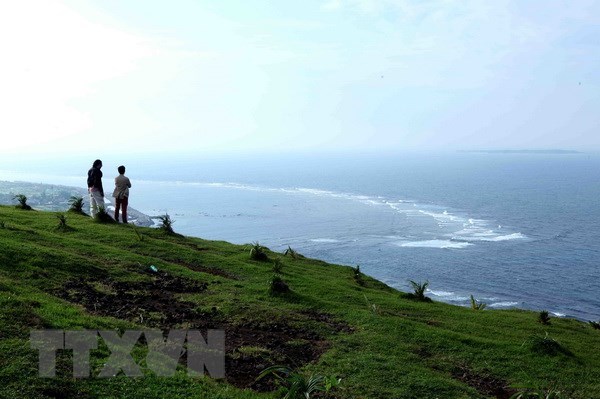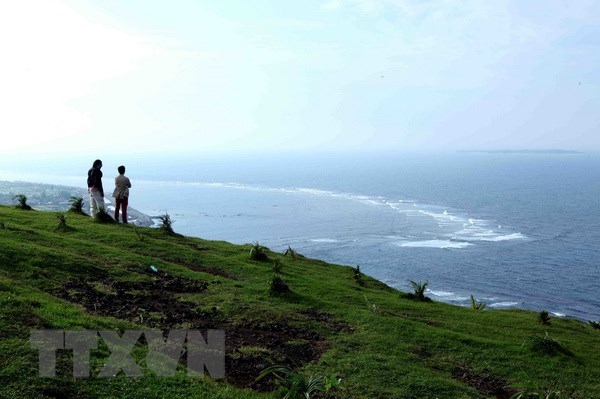
Authorities of the central coastal province of Quang Ngai have asked the Ministry of Culture, Sports and Tourism to approve an adjustment to the masterplan to develop Ly Son island district into a national tourism area.

A view of the sea from Thoi Loi Mountain on Ly Son Island (Photo:
VNA)
Under the masterplan approved by the Government, the district will be turned
into a national tourism destination by 2020. However, the island district
boasts great potential and meets conditions to be recognised as a national
complicated tourism area.
The provincial People’s Committee said that the adjustment to the masterplan is
necessary to fully tap the tourism potential of the locality, thus making the
island a main driving force for tourism development of Quang Ngai.
Ly Son Island has a population of 23,000 people.
The island – as well as a vast coastal area in the districts of Binh Son, Tra
Bong, Ba To, Sa Huynh, Nghia Hanh and Quang Ngai city on a total of 2,000sq.km
– is being considered for designation as a Global Geo-Park by UNESCO.
According to reports of the district People’s Committee, the island welcomed
more than 230,000 visitors in 2018, raking in 240 billion VND (some 10.3
million USD). It has seen strong development of accommodation in recent years,
being home to 124 accommodation facilities and a large number of restaurants,
providing jobs for about 6,000 labourers.
Source: VNA
Located just a 20-minute drive from Hoa Binh City, Ora Hill Farmstay & Glamping Hoa Binh is a captivating new destination nestled in Mo hamlet, Bình Thanh commune, Cao Phong district. Combining farming with leisure, this tranquil retreat is perfect for those seeking balance, joy, and an immersive experience in the expansive beauty of nature.
Muong Bi - Tan Lac is renowned as one of the four famous Muong regions in Hoa Binh province. Blessed by nature with a favourable climate and stunning landscapes, Tan Lac holds great advantages for tourism development. The local tourism industry has made remarkable strides in recent times thanks to the attention and support from the local authorities and sectors.
With its strategic location, well-developed transport network, and diverse soil and climatic conditions, Hoa Binh is emerging as a must-visit destination in Vietnam's northwestern tourism corridor. The province boasts numerous attractions, including the Kim Boi hot springs (Kim Boi district), the Dau Rong cave complex (Cao Phong), the Mai Chau valley (Mai Chau), and the iconic Hoa Binh hydropower plant.
The northern mountainous province of Hoa Binh has been listed among the 71 most beautiful places to visit worldwide by the prestigious US travel magazine Condé Nast Traveller.
Hoa Binh province’s rich natural and cultural resources position it as a prime location for developing community-based tourism (CBT). In recent years, support from central and provincial policies, as well as assistance from non-governmental organisations, have encouraged local ethnic minority and mountainous communities to actively engage in the sector.



